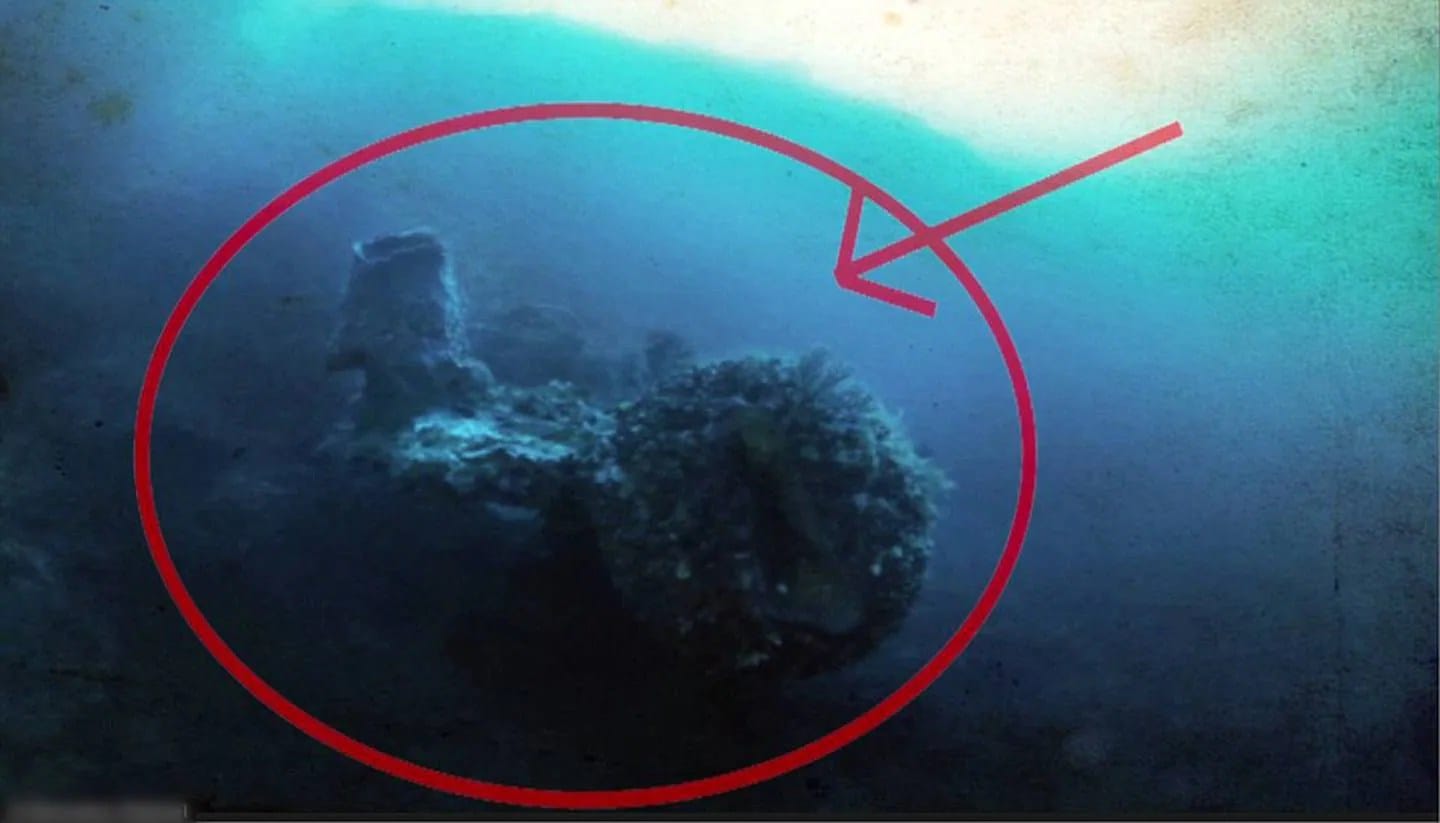Get ready to dive into a captivating conspiracy theory: the Bermuda Triangle and its alleged connection to secret German bunkers. We’ll delve into the historical facts and wild speculations surrounding this mysterious region, separating truth from myth in this thrilling exposé.
Could Secret Nazi Bunkers Lurk Beneath the Bermuda Triangle?
The Bermuda Triangle. Even the name evokes a sense of mystery and intrigue. This infamous patch of ocean, notorious for the unexplained disappearances of ships and planes, has captivated imaginations for decades. But what if, beneath those waves, a secret from World War II lies hidden? What if Nazi Germany, in a feat of engineering prowess, constructed underwater bunkers in the depths of the triangle?
The theory, as captivating as it might seem, is likely rooted more in speculation than fact. While German U-boats did operate in the Atlantic during World War II, the logistical and technical challenges of building massive, fortified structures on the ocean floor—especially in a notoriously treacherous area like the Bermuda Triangle—would have been astronomical, even for the technologically advanced Germans.
Fueling the theory is the Bermuda Triangle’s inherent mysteriousness and the public’s enduring fascination with Nazi conspiracies. Yet, despite its allure, there’s a glaring absence of any concrete evidence to support the existence of these underwater fortresses. No blueprints, no declassified documents, no firsthand accounts from engineers or soldiers—nothing to suggest that such an ambitious undertaking ever took place.
So, while the idea of stumbling upon a secret Nazi bunker beneath the waves of the Bermuda Triangle sparks our collective imagination, it remains just that: an intriguing idea. The mystery of the Bermuda Triangle might endure, but underwater Nazi lairs are probably not among its secrets.
Are There Still Bunkers in Germany?
Decades after the echoes of World War II and the Cold War faded, Germany’s landscape still bears the scars of these conflicts: thousands of bunkers, silent sentinels of a turbulent past. These concrete and steel behemoths, built to withstand air raids and even nuclear attacks, stand as stark reminders of a world on the brink.
Unraveling the History of German Bunkers
To truly understand the enduring presence of bunkers in Germany, we must journey back to their origins. During the Nazi regime, a sprawling network of bunkers was constructed across the nation. These structures were not just for the military; civilians, too, sought refuge within their fortified walls, seeking protection from the terrifying reality of air raids and the ever-present threat of chemical warfare.
As the ashes of World War II settled, these bunkers faced an uncertain fate. Some were abandoned, left to the mercy of time and nature, their silent interiors slowly crumbling. Others were repurposed by the Allied forces, their original purpose subverted as the world adjusted to a new reality.
Then came the chilling grip of the Cold War, a period of intense geopolitical tension that cast a long shadow over the globe. Once again, bunkers became symbols of survival, as both sides of the Iron Curtain sought shelter from the terrifying prospect of nuclear annihilation. These Cold War-era bunkers, often larger and more technologically advanced than their predecessors, represented a chilling evolution in the art of survival.
The Fate of Germany’s Bunkers Today
Today, Germany grapples with the legacy of its bunkerized past. Thousands still stand, scattered across the country like ghosts of conflicts past. Some have found new life, transformed into museums that offer chilling glimpses into the realities of war, while others have been reborn as hotels, providing a unique—if somewhat eerie—stay for adventurous travelers. Still others have been repurposed as nightclubs, their pulsating energy a stark contrast to the silence they were designed to endure.
However, a vast number of bunkers remain abandoned, slowly succumbing to the ravages of time. This presents Germany with a complex dilemma: Should these Cold War relics be preserved, their historical significance acknowledged, or should they be demolished, their presence erased from the landscape?
The debate surrounding the fate of Germany’s bunkers is multifaceted. Some experts argue that they are outdated, obsolete against the advanced weaponry of modern warfare, while others maintain that these structures could still offer crucial protection in the face of natural disasters or even terrorist attacks.
And then there’s the persistent myth of German bunkers hidden within the Bermuda Triangle. This theory, while undoubtedly intriguing, lacks any credible evidence and has been debunked by numerous experts. The true stories behind Germany’s bunkers, however, are no less captivating.
The legacy of Germany’s bunkers is a complex tapestry woven from fear and resilience. They are enduring reminders of a turbulent past, prompting reflection and debate about their significance in the 21st century. Whether they are preserved as historical monuments, transformed into spaces for contemporary use, or left to fade into oblivion, these concrete giants continue to captivate our imaginations and challenge our understanding of history.
Inside Germany’s Concrete Giants: What are German Bunkers?
Imagine structures so formidable, so resilient, that they could withstand the relentless onslaught of World War II. These were the German bunkers, fortresses of concrete and steel, built to defy the destructive power of modern warfare.
These bunkers were more than just concrete boxes; they were intricate feats of engineering, often featuring complex layouts with interconnected tunnels, multi-level structures, and ventilation systems designed to keep the air breathable even in the depths of a siege. Their interiors housed soldiers, ammunition stores, command centers—everything necessary to sustain a fighting force under the most extreme conditions.
German bunkers were not a one-size-fits-all affair. Their designs varied depending on their intended purpose and location. Some, like those constructed using the standardized “Regelbau” system, were modular and easily deployed, enabling rapid construction in strategic locations. Others, such as the colossal coastal fortifications that comprised the Atlantic Wall, were monumental undertakings, designed to repel any attempted invasion from the sea. And deep beneath the earth, heavily fortified command bunkers provided sanctuary for high-ranking officers and crucial communication hubs, shielding them from the chaos unfolding above.
But bunkers were not just the domain of soldiers. In cities and towns across Germany, air-raid shelters provided a vital lifeline for civilians caught in the crossfire. These shelters, while often cramped and austere, offered a semblance of protection from the terrifying rain of bombs that rained down from the sky.
Today, these silent concrete behemoths stand as stark reminders of a world at war. They offer a visceral connection to the past, providing a glimpse into the realities of wartime life, the strategic brilliance of military minds, and the profound impact that conflict has on individuals and societies. Exploring these structures is to embark on a journey through history, one that is both fascinating and sobering.
Did German Trenches Have Bunkers?
World War I, a conflict defined by its brutal trench warfare, saw soldiers on both sides trapped in a nightmarish labyrinth of mud, barbed wire, and constant danger. Survival became the primary objective, and for German troops, bunkers provided a crucial advantage in this desperate struggle.
These bunkers, far from the mythical underwater fortresses imagined in the Bermuda Triangle, were integrated directly into the trench systems. They provided much-needed shelter from the relentless artillery barrages, machine-gun fire, and the ever-present threat of chemical weapons.
In the early stages of the war, these bunkers were rudimentary affairs—small dugouts carved into the sides of trenches, offering minimal protection from the elements and enemy fire. As the war progressed and artillery bombardments intensified, the Germans, renowned for their engineering prowess, began constructing more elaborate “deep dugouts.” These underground shelters, often extending multiple levels below the earth, provided increased protection and could house more soldiers, some even featuring basic amenities like beds and electricity.
The pinnacle of German bunker design in World War I was the reinforced concrete bunker. These structures, virtually impervious to artillery fire, represented a significant leap forward in battlefield protection. They served as vital command posts, medical stations, communication hubs—any function that required enhanced protection and provided soldiers with a brief respite from the horrors of the trenches.
While the myth of hidden German bunkers in the Bermuda Triangle persists, the true story of German bunkers in World War I is a testament to human ingenuity in the face of unimaginable hardship. They offer a poignant glimpse into the brutal realities of trench warfare and the constant struggle for survival that defined this devastating conflict.
- Georgia Platform: A Southern Strategy, 1850s - March 31, 2025
- How many weeks is 40 days: Quick Conversion Guide for Accurate Results - March 31, 2025
- How many feet is 300 meters? 984 Feet: Understand Length Conversions Easily - March 31, 2025




![[Facts about Germany culture]: Unveiling the Rich Tapestry of German Traditions and Heritage Facts-about-Germany-culture_2](https://www.lolaapp.com/wp-content/uploads/2023/12/Facts-about-Germany-culture_2-150x150.jpg)












1 thought on “The Truth About the Bermuda Triangle and German Bunkers: Exploring a WWII Conspiracy Theory”
Comments are closed.